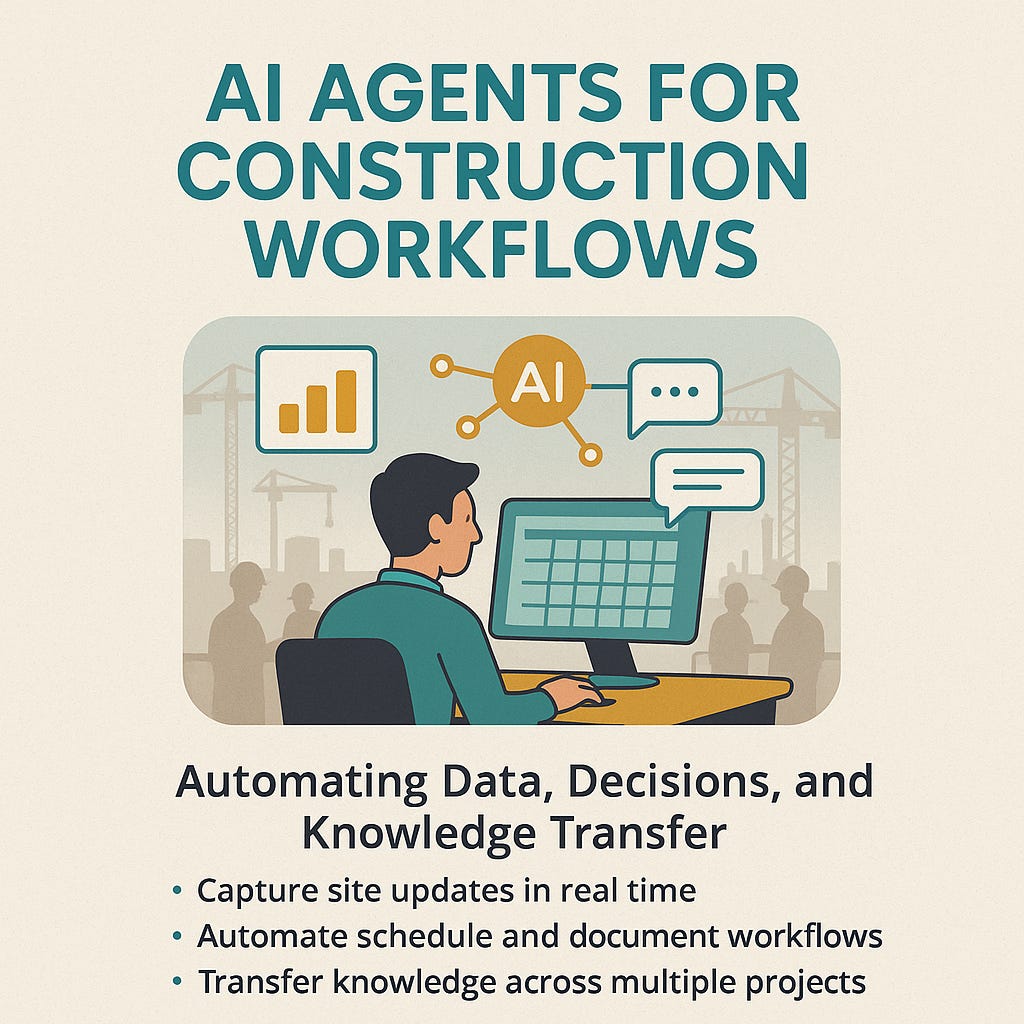Scaling AEC Tech: Flowlly’s AI Playbook for Growth by Rahul Vaishnav
Discover how Flowlly helps AEC tech founders scale faster using AI automation, knowledge capture, and predictable growth systems.
Lessons From the Field: Why Experience Drives Innovation
In AEC tech, the best solutions don’t come from whiteboards—they’re forged on site, where problems are real and costly.
Flowlly’s co-founder Rahul Vaishnav learned this firsthand during his early days in underground coal mining in India and tunneling projects in Los Angeles. When you’re 200 feet underground at 36°C with 90% humidity, teamwork and problem-solving aren’t optional—they’re survival skills.
This experience shaped Rahul’s approach to technology:
Understand the work first → The deeper the field insights, the smarter the tech.
Adapt to real-world constraints → Field conditions drive adoption far more than features.
Prioritize human collaboration → High-pressure environments prove that scaling happens when people and tools work together.
Takeaway for AEC founders: Before building AEC tech automation tools, spend time shadowing crews and mapping workflows. This field empathy was the seed that grew into Flowlly’s AI-driven solutions.
Flowlly’s Origin Story: From Big Vision to Practical AI
Flowlly started with an ambitious idea: an AI agent that could automatically call site teams, collect updates, and sync project schedules in real time.
But two years ago, the AI infrastructure wasn’t ready for full-scale automation. Instead of stalling, Rahul and his co-founder pivoted intelligently:
AI Meeting Agent → Captures discussions, tracks approvals, and closes feedback loops.
WhatsApp Integration → Field teams send updates via chat; AI converts them into formal reports.
Schedule Analysis Engine → Compares on-site progress with Procore schedules and flags delays instantly.
This “start big, scale small” framework became a turning point for Flowlly. By focusing on one high-value workflow at a time, adoption skyrocketed—especially among contractors overwhelmed by manual reporting.
Lesson for AEC SaaS founders: Don’t aim to automate everything at once. Win trust by solving painful, daily problems first, then expand into deeper AI automation tools as adoption grows.
Capturing & Reusing Knowledge: Compounding AEC Growth
In construction, lost knowledge = lost profit.
Rahul shared two real-world examples that shaped Flowlly’s focus on knowledge capture:
An RFI from a past project saved thousands in rework.
A bid negotiation cut a $10M cost item in half using insights from historical projects.
Without documentation, these valuable insights disappear forever. That’s where Flowlly comes in—its platform records meeting notes, RFIs, and site learnings, making them searchable for future projects.
Method for AEC founders:
Centralize your critical project knowledge in one place.
Make it easily retrievable for estimating, bidding, and problem-solving.
Use tools like Flowlly to standardize information sharing across teams.
By capturing project intelligence, AEC tech startups unlock compounding returns—faster bidding, fewer mistakes, and predictable revenue growth.
The Technical Challenges Behind AI in Construction
Building AI for AEC isn’t about futuristic robots—it’s about taming messy, fragmented data.
Flowlly faced two major engineering hurdles:
Context Selection (“Scaffolding”)
The AI must pull the right mix of documents, history, and company-specific processes to generate accurate outputs.
State Preservation
If one step fails in a multi-step AI workflow, the system resumes intelligently rather than starting over.
Unlike software engineering, construction AI doesn’t have automated “linters” to validate every output. Human expertise is still essential to check accuracy.
Example: Flowlly cross-checks AI-generated schedule updates against historical project patterns before surfacing results, combining automation with expert oversight.
For AEC founders, this means AI should amplify decision-making—not replace it.
Scaling AEC SaaS: Predictable Revenue & Trust-Led Sales
Here’s the truth: scaling construction tech is less about code and more about trust.
Rahul admits Flowlly underestimated how long enterprise sales cycles can be. Even with powerful AI-driven automation, adoption is slow because:
Relationships drive purchasing → Large firms won’t commit without deep trust.
Pilots start small → You must prove value on one project before scaling portfolio-wide.
Paperwork is painful → Flowlly wins where documentation is overwhelming—matching invoices, consolidating WhatsApp updates, and syncing Procore data.
Practical strategy for AEC tech founders:
Identify a high-friction workflow—like daily logs or progress reports.
Solve it better than anyone else.
Turn successful pilots into case studies to accelerate trust.
One Flowlly client reduced reporting time by 40% using AI-powered WhatsApp integrations—a measurable ROI that unlocked enterprise-wide expansion.
Key Takeaways for AEC Tech Founders
Field experience leads to better product-market fit in AEC tech automation.
Start small, scale strategically—win with one workflow, not ten.
Capture knowledge early to enable predictable growth systems.
AI needs context and oversight to work in construction environments.
Trust-driven sales cycles require case studies and proof of ROI.
If this journey speaks to you, you’ll get even more from the complete episode.
🎧 Listen here for more episodes:
Spotify | Apple | Youtube | Season 5


